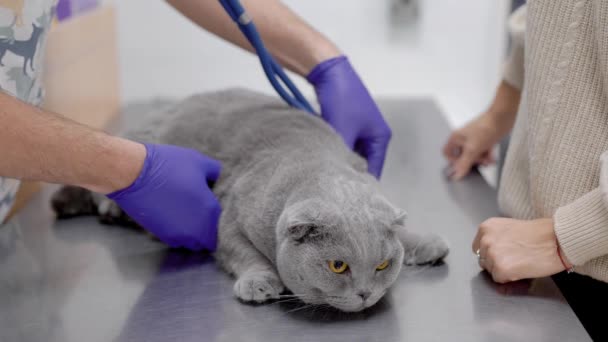Removal of tartar by ultrasound in dogs and cats
 How to prepare an animal for professional cleaning teeth with a scaler?
How to prepare an animal for professional cleaning teeth with a scaler?
Before each procedure, the veterinary dentist conducts a pet’s oral examination. This not only allows you to assess the condition of the teeth and gums of your dog or cat, but also gives you the opportunity to ask the veterinary dentist all the questions you are interested in about caring for your pet’s mouth at home.
Before the procedure, it is necessary to take blood tests to identify possible health problems that cannot be seen during the examination. Analyzes will also help you understand whether your cat or dog can be anesthetized.
The next stage is anesthesia (anesthesia). This procedure often worries pet owners. In fact, if the normal state of the animal is determined before this procedure (examination, tests, and, if necessary, examination by a cardiologist), then this procedure is safe.
In addition to general anesthesia, a veterinary dentist uses local anesthesia in the mouth of your dog or cat. This reduces the dose of general anesthesia. The overall safety of the procedure increases, and your pet wakes up faster.
Under general anesthesia, brushing your teeth with a scaler will be painless for your pet!
What is included in professional teeth cleaning in our veterinary center?
A complete assessment of the condition of the teeth and oral cavity, which, if necessary, may include X-ray diagnostics. X-rays are needed to determine such common causes of pain as broken teeth and their roots, periodontal diseases, abscesses, or affected teeth.
Full cleaning under the gum line. It is under her develop periodontal disease. Cleaning these places is impossible without general anesthesia in an animal! It is in this place that bacteria multiply, and it is from here that tartar in dogs and cats begins to grow.
Professional removal of tartar and polished teeth. During the procedure, stones and plaque will be removed from the teeth, and then polishing of the teeth, which will prevent further development of plaque and tartar.
After recovering from anesthesia, almost all cats and dogs can immediately go home, and if no additional procedures have been performed, they can immediately eat and fully return to normal life. A veterinarian will tell you what procedures were performed and how to care for your pet’s oral cavity between the ultrasonic cleaning procedures.
How much is a tooth brushing of a dog or cat with a scaler?
The total cost is made up of the teeth cleaning procedure itself, tests and the cost of anesthesia, which depends on the type and weight of the pet. Prices for veterinary services – dentists.



